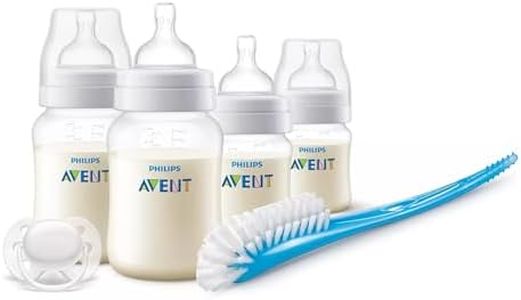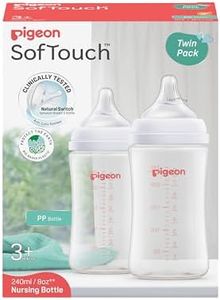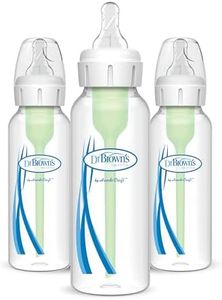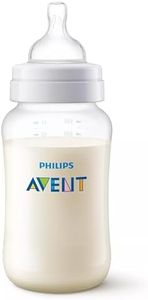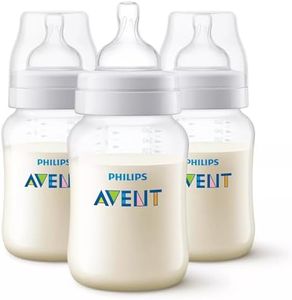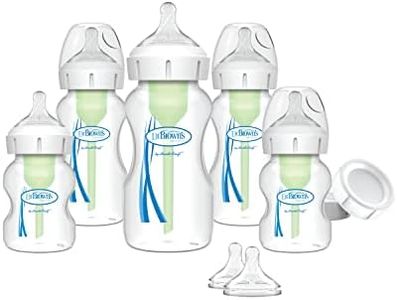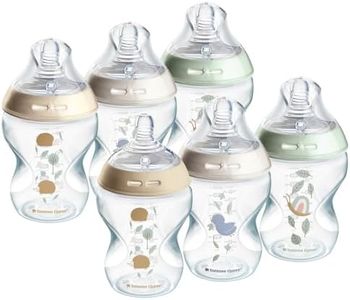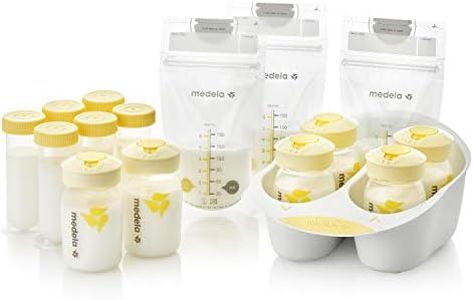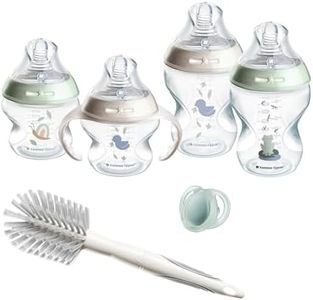We Use CookiesWe use cookies to enhance the security, performance,
functionality and for analytical and promotional activities. By continuing to browse this site you
are agreeing to our privacy policy
10 Best Breastfeeding Bottles
From leading brands and best sellers available on the web.Buying Guide for the Best Breastfeeding Bottles
Choosing the right breastfeeding bottles is important for both you and your baby’s comfort and health. A good bottle can make feeding easier, help avoid nipple confusion, and enable a smooth transition between breast and bottle feeding. When shopping for breastfeeding bottles, it is best to consider your baby’s individual feeding needs, how easy the bottle is to clean, and the features that support a comfortable feeding experience.Nipple Shape and MaterialThe nipple of a breastfeeding bottle is the part your baby sucks on. Its shape and material are crucial because they affect how well your baby can latch, making feeding feel natural and reducing the risk of nipple confusion if you switch between breast and bottle. Nipples can be shaped to mimic a mother's breast (wide or naturally contoured) or can be standard and narrower. Materials are usually silicone (which is durable and easy to clean) or latex (which is softer but less durable). If your baby has trouble latching, opt for a breast-like nipple. For easy cleaning and longevity, silicone is usually a good choice.
Nipple Flow RateNipple flow rate controls how fast milk comes out as your baby sucks. This is important because too quick a flow can overwhelm a newborn, while a too-slow flow can frustrate an older baby. Bottles typically offer slow, medium, and fast flow nipples. Newborns and younger babies generally do best with slow flow, while older babies may need a faster flow as they become stronger feeders. Always pay attention to your baby’s feeding cues and consult your pediatrician if you’re unsure which flow rate to choose.
Bottle MaterialBreastfeeding bottles are usually made from glass, plastic, or stainless steel. This spec matters for safety, durability, and ease of cleaning. Glass bottles are heavy and easy to sterilize, plastic bottles are lightweight and shatter-proof, while stainless steel is durable and keeps milk at a more stable temperature. If you're concerned with breakage or portability, choose plastic or stainless steel. For a non-reactive, easily sterilized option, glass could be right for you.
Bottle SizeBottle size refers to how much liquid the bottle holds. Standard sizes are around 4-5 ounces for younger babies and 8-9 ounces for older babies with larger appetite. It’s best to start with smaller bottles for newborns, as their stomachs are tiny, and increase in size as your baby grows and drinks more at each feeding. Consider how often you plan to feed and if you want to carry bottles out with you when selecting size.
Ease of Cleaning and DesignThis spec is about how simple the bottle is to take apart, wash, and reassemble. Bottles with fewer parts are easier and quicker to clean, but some anti-colic or vented bottles have extra parts to reduce gas and fussiness. If convenience is important or if you don’t want to spend much time washing, look for bottles with a wide neck and minimal parts. If your baby is prone to colic, vented designs might be worth the extra cleaning effort.
Compatibility with Breast PumpIf you plan to pump milk, it’s helpful if your bottles are compatible with your pump, allowing you to pump directly into the bottle. This reduces the need to transfer milk and decreases the chance of spills or contamination. Check the brand and size specifications of both your pump and the bottles to ensure they work together.

